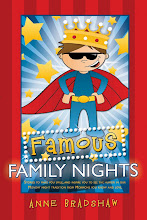by Rebecca Talley
When writing fiction, it’s important to understand the techniques of writing effective and realistic dialogue. Dialogue in fiction is quite different from speech in real life.
Mimicking true conversation won’t be effective in a story. Listen to a few conversations and you’ll understand why. People tend to say “um,” “uh,” “yeah,” or “like.” Some people even pepper their conversations with, “you know what I mean.” It’s a subconscious speech pattern that the user rarely recognizes, but in written form would kill a story. Though people stammer, stutter, or pause throughout natural conversation, you don’t want to include that in your dialogue.
Dialogue should propel the story forward. Readers don’t need to know all the gritty details of a character’s day unless that specific information moves the story forward. Conversation between two characters that portrays certain qualities of those characters or crucial information exchanged between characters are both effective uses of dialogue.
Dialogue needs to be attributed to characters. It’s most effective when the character has such a unique voice that the reader instantly knows which character is speaking. When using dialogue tags, the word said should be used most often. Occasionally asked or answered can be used, but stay away from words like interjected, declared, insisted, intimated or other less-used words that may draw a reader out of the story. Said seems to disappear and it doesn’t distract from the story. As a writer, you don’t want anything to pull your reader away from the world you’ve created.
Akin to this is giving character speaking attributions that are physically impossible to accomplish. It’s hard to laugh or smile some dialogue. “It’s Tuesday,” she laughed. If your character is laughing. She’s probably not saying anything. A better choice might be, “It’s Tuesday.” She laughed. Two separate actions.
While English teachers may encourage the use of varying dialogue tags, their use generally communicates that the writer is inexperienced.
Make sure that your dialogue is realistic without being real-life speech, that it moves the story forward, and that the tags don’t distract from the story. Following these guidelines will help you write your fiction in a more effective manner and may just mean the difference between an acceptance and a rejection.
Tuesday, September 6, 2011
Effective Dialogue
Posted by Rebecca Talley at 12:09 PM
Labels: Book Writing, writing, writing fiction
Subscribe to:
Post Comments (Atom)

















2 comments:
You did a good job of making the distinction between realistic and real life ... The story still needs to move forward and at the same time it needs to sound natural.
I also write stage plays and this is something that really comes across when you hear the 'spoken' words. too much exposition is the most common mistake, but you still have to get the story across.
(Fellow campaigner - following you!)
Good post Rebecca. Writing good dialogue can be an intimidating beast.
The trick is using dialogue to move the story while making it appear to be natural and not merely an information dump. Tough stuff, but thanks for the tips.
Post a Comment